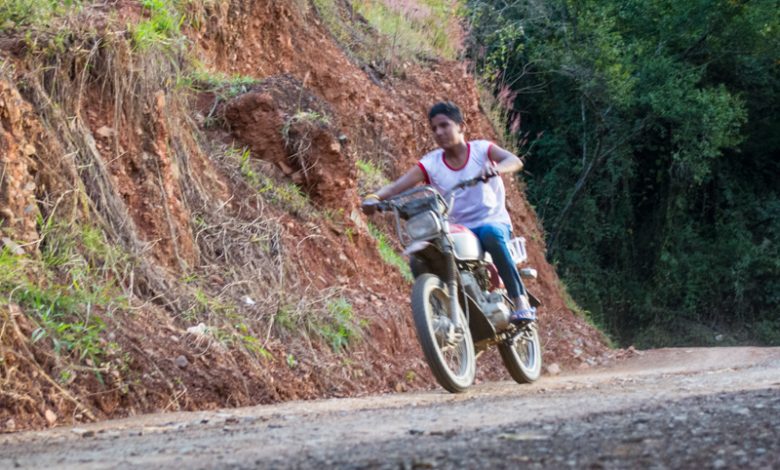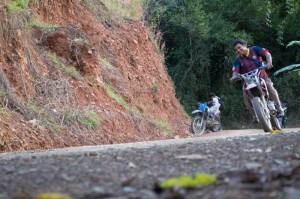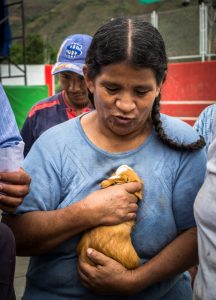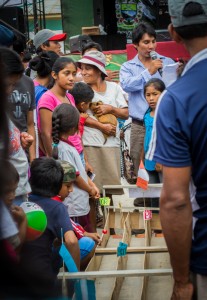Of Bikes and Cuys

Motorcycles roared like felines trying to intimidate. You could hear them echoing on the cliffs of the valley’s narrow gorge. It is the day before Quebrada Honda’s anniversary and to celebrate they scheduled a motorcycle race.
The road through the hamlet of Versalles is taped off to keep traffic from the track. People walked along the outside of the tape, stopped and talked. Then, as the roar bounds back and forth, everyone ran to the side of the track.
There was a curve as the bikes approached the bridge over the Tunki Mayu, the River of the Cocks of the Rocks. A policeman was there with a flag to warn them of the curve and wave them to it.
Anticipation became tangible as everyone tried to guess how long it would take for the first bike to arrive. The sounds deceived. Though the bikes were still a bit away it seemed they were upon us.

Finally, a lone biker purred forward, rushing but careful on the rutted dirt road. He made the turn to the cement bridge fine, dropping one foot as he went. After the bridge, there was a patch of mud. As he hit it, trying still to straighten up from the curve, he almost lost it. A gasp, more of a moan, rose from the crowd, precisely when he straightened his bike and raced on.

Ten minutes passed. No motorcycles came. Our patience frayed. We could hear them but could not see them.
People said this was the last round of the last race of the set celebrating Quebrada Honda. It was the bigger, heavier bikes. Earlier races had involved smaller bikes. They said that professional racers had come from various cities to compete because the purse was big. The race involved two rounds, from distant Quebrada Honda the cyclists would make two runs back and forth to a distant peak, passing through Versalles in the District of Ocobamba, and not Yanatile of which Quebrada Honda is the capital.

Finally, one by one, the bikes poured by. None of the other bikers pushed the corner on the bridge like the first one. None came close to biting it. Each dropped their foot and in most cases actually touched ground. You could see why the one cyclist had such a lead.
By the time the last biker came by, people were bored and had drifted off to eat lunch and carry on with their day.
More excitement was had the day before in the Sports Complex of Quebrada Honda, around a set of narrow woodlined tracks, maybe eight inches high. People blocked them from view.
Not only could you feel their intensity, you could also hear the announcer with his over the top language and deep-bass voice keeping the energy level high and citing the glories of each of the competitors.
They were large cuys, guinea pigs. People held them up and then placed them in the tracks, encouraging them to scamper and compete to win, when on your mark, etc. was called.

People loved the motorcycle race, in part because many people have them. Motorbikes are the major mode of transport in this area of the Cuzco’s jungle lands. People could relate to the travails and hopes of the racers. But even more they loved the guinea pigs, the cuys.
Most every kitchen has guinea pigs. These places are dark, covered adobe spaces, sometimes with a gas range or a traditional mud qoncha or fogón, a multitiered stove with a roaring flame inside. Guinea pigs roam over the floor and hide in dark corners.The kitchen is their corral, their home. They, in turn, are not only company in the kitchen, they are one of the major meats people eat when guests come or for celebrations. Cuy is the food that most symbolizes Cuzco.
The champion cuys were announced and people cheered celebrating both the guinea pigs and the people who held them high, their owners. The cuy race is an annual tradition in Quebrada Honda and people keep the history of winners in their hearts.




